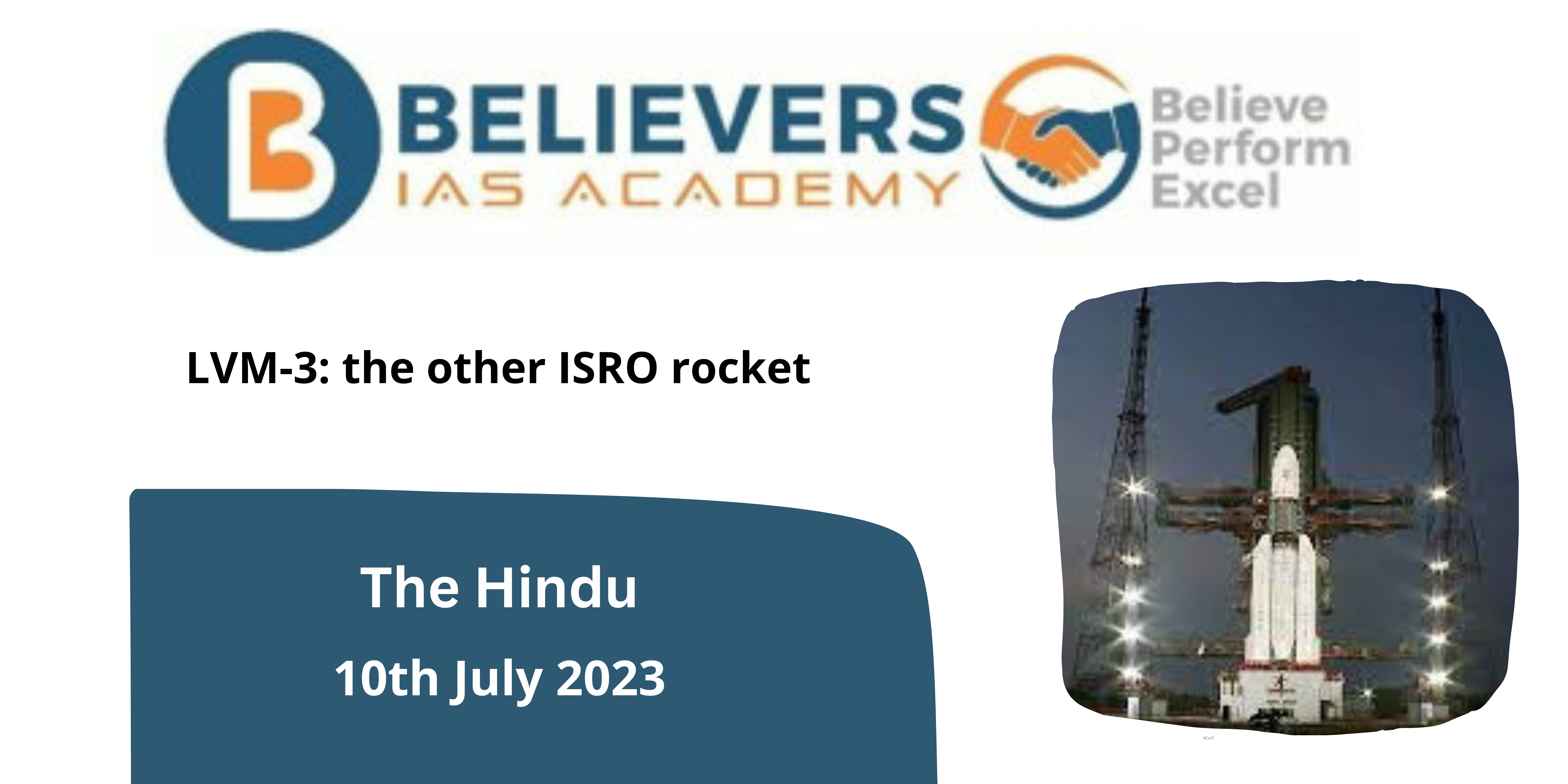LVM-3: the other ISRO rocket
Context
ISRO will launch its Chandrayaan 3 mission on July 14 onboard an LVM-3.
What are Launch vehicles?
Launch vehicles are vehicles used to send payloads into space from the Earth’s surface, such as satellites, scientific instruments, and spacecraft. To escape Earth’s gravity and enter the desired orbit or trajectory, they generate the necessary thrust and velocity.
What are the different Launch vehicles used by ISRO?
PSLV
- Introduction of Liquid Stages: The use of liquid stages has improved the performance and mission flexibility of PSLV, the first launch vehicle in India to be fitted with liquid stages.
- A workhorse that is Reliable and Versatile: PSLV has proven to be a dependable and versatile workhorse for India’s space missions from its first successful launch in October 1994.
- Satellite Launches: PSLV has been used to launch multiple Indian and foreign customer satellites, demonstrating its dependability and credibility.
- Chandrayaan-1 and the Mars Orbiter Spacecraft: In 2008 and 2013, respectively, the PSLV successfully launched two major spacecraft. These missions showed off PSLV’s planetary and lunar exploration skills.
- Feathers in the hat of PSLV: The successful launches of the spacecraft Chandrayaan-1 and Mars Orbiter added to the PSLV’s accomplishments and showcased its prowess in space exploration.
- Multi-Payload Capability: The PSLV’s payload fairing is fitted with multi-payload adaptors, making it possible to launch several payloads into orbit at once.
- Mission Flexibility: The PSLV is capable of completing difficult missions, such as multi-orbit and multi-satellite launches, demonstrating its mission flexibility.
GSLV
- Purpose: To deploy communication satellites into geostationary transfer orbit (GTO), the GSLV Mk II is an Indian launch vehicle created by ISRO.
- Cryogenic Third Stage: The GSLV Mk II uses a cryogenic third stage to launch the satellite into geosynchronous orbit (GTO). An indigenous cryogenic stage was later designed and built into the vehicle after initially using cryogenic stages supplied by the Russian company Glavkosmos (GK).
- Cryogenic Stage Developed Domestically: Beginning with the GSLV D5 mission in January 2014, ISRO started using its cryogenic stage developed domestically for the GSLV Mk II. As a result of this accomplishment, India’s space programme passed a crucial turning point because it became independent in the field of cryogenic technology.
- Operational Fourth Generation Vehicle: The GSLV Mk II is categorised as a fourth-generation launch vehicle that is operational. It is an example of how India’s launch vehicle technology has developed over time, including upgrades and domestic components.
- Successes Consecutive: Since January 2014, the GSLV Mk II has successfully launched six rockets in a row, setting a remarkable record. This dependable performance has shown the vehicle’s dependability and maturity.
- Deployment of Communication Satellites: The GSLV Mk II is essential to India’s space programme since it makes it possible to deploy communication satellites into GTO. These satellites provide connectivity to the internet, television, and a variety of telecommunications services.
- Like the PSLV, the GSLV has multiple configurations. The most powerful configuration is called LVM-3 (Launch Vehicle Mark 3), which can lift to 10 tonnes to low-earth orbit.
What do we know about Launch Vehicle Mark 3 that is going to be used in the recent launch?
- LVM-3: This configuration of the GSLV, which has three stages, is the most potent.
- A. First stage: Two S200 boosters are fastened to the sides of the rocket body to make up the first stage. These boosters burn solid fuels called hydroxyl-terminated polybutadiene.
- B. Second Stage: It is propelled by two liquid-fueled Vikas engines. Unsymmetrical dimethylhydrazine or nitrogen tetroxide are the two liquid fuel alternatives.
- C. Uppermost Stage: A cryogenic engine powers the LVM-3’s uppermost stage. It burns liquefied oxygen in conjunction with liquefied hydrogen as fuel.
- Cryogenic Engine: The LVM-3’s highest stage is powered by a cryogenic engine that burns liquid oxygen and hydrogen. Due to its high specific impulse, hydrogen is an effective rocket fuel. But it must be liquefied and kept at extremely low temperatures, necessitating unique pumping and delivery systems.





